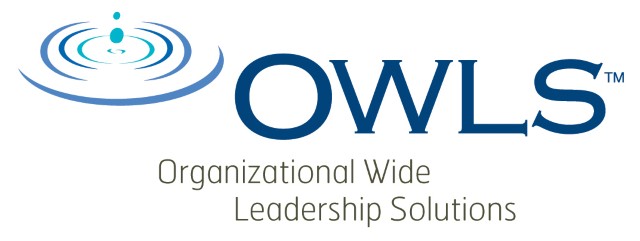Congratulations. And, welcome to your first day at your new job. I know, I know. Right now you’re already thinking, “What’s this guy talking about?” After all, you just parked in the same old parking space (unless somebody beat you to it), you’re staring at the same old papers on top of your desk, the last dregs of yesterday’s coffee are aging nicely in your cup while the familiar and annoying message light is blinking from your phone. You’re right to wonder, “What’s new about all this?”
The short answer is there’s nothing new. At least nothing new about the space you occupy, the stuff you’ve collected and the piles of work that wait. What is new, if you decide to go with me on this, is you. The way you think of your job, the way you approach your day, your motivation for doing what you do in your work. If you’re not feeling particularly new about that yet, bear with me. That’s exactly where we’re headed.
Now, before you dump new coffee into the old cup. Before you hit the button that deletes your phone messages, boot the computer or peek at your e-mails, take a minute to think about why you’re here. I don’t mean “here” in the cosmic sense, you can tackle that on your own time. This is work time and I’d like you to think about why you’re in the job you’re in. Why you show up every day.
If your answer has anything to do with “paying the bills,” “responsibility” or, “hey, everybody’s gotta be somewhere,” you’re selling yourself short. There’s more to you than meets your job description. Your life is more important than just counting down its minutes while watching the clock and being quietly desperate or bored in what you do. So, for now and the rest of your life, banish phrases like “it’s not my job” from your vocabulary. From now on, your job description makes up only 10 percent or less of what it is you do. You didn’t check whatever parts, talents and interests don’t apply to your job description in the lobby when you arrived. Your job is now discovering what those unused and cobwebbed pieces are, waking them up and letting them flex their muscles and breathe new life into your work.
You’ll remember from last month’s column that I asked you to “reframe” your job. To change your thinking about who it is you’re working for. To start thinking of yourself as self employed. As a self employed person your job, you boss, in fact each person you come in contact with, is your client. It’s up to you to take care of your clients. But also, to take care of yourself. To get what you need in exchange for what you deliver. That old success adage, “find a need and fill it” is actually a two-way street. You keep your clients by giving what you can toward what they need. And, you keep yourself sane and give yourself a shot at work satisfaction by getting for yourself what you need.
So, what is it, exactly, that you need from this client? Remember, we’ve already covered the “paycheck” thing. What you need from your job, from any aspect of your life, only you can answer. But, maybe I can steer you in the direction of where to start looking for that answer.
We’ve all heard the business phrase, “If you fail to plan, you plan to fail.” Yes, it’s old. Certainly, it’s overused. But, it’s also true. And, it explains why organizations put so much time and effort into creating strategic and marketing plans. Remember, you are now self-employed. So, where is the strategic and marketing plan for you? If you have one, great. Then you’re periodically accessing your progress, changing your plan to reflect your development and working toward it every day.
The truth is, though, that most people, regardless of their job title, don’t have such a plan. Or even a clue about getting one. So, let’s start the process. Your first assignment is to create a mission statement for your. You know what a mission statement is. At least a typical mission statement. I’m going to go out on a limb here and say that, by the time it’s complete and watered down by committees, most mission statements are unintelligible and meaningless.
One of the first places I worked had a committee-drafted mission statement that ran about five sentences. The COO had nothing better to do, so he wandered the building and, every so often, asked some unsuspecting employee to recite the statement. If the employee did, the COO handed her or him a dollar. If the employee couldn’t or wouldn’t recite the right words, the employee owed the COO a dollar. Early on I decided to preempt that whole painful, embarrassing process by keeping a stack of one-dollar bills in my upper right hand desk drawer. Every time the COO came around, I’d just slide the drawer open, point at the stack and continue going about whatever it was I was doing.
So, you’re first advantage in the market place of the self-employed is to create a mission statement for yourself. But, a statement that actually means something. I’ll save you some time. You cannot use words or phrases like, “commitment” “contribution” “…making a profit and serving our stakeholders, customers, employees and the world” or “making the world safe for democracy while championing the American way of life.”
You must craft a mission statement that is short, understandable by a 10-year old and one that expresses not only your mission in your new business but that also is the most basic reason behind everything you do— even on weekends.
If you need some help getting started, just begin jotting things down. Write out things that are important to you; talents you have that have, up until now, been underused on the job; events and encounters that repeatedly frustrate you, because these often point to important parts of yourself that are bottled up, neglected and screaming to get out.
If you need a boost to get started even with the jotting down part, check out Jeffrey Abrams’ The Mission Statement Book and Scott Bedbury’s work, A New Brand World, 8 Principles for Achieving Brand Leadership in the 21st Century. The first will show you how even the large companies settle for mediocrity and blandness while expressing their missions. The second demonstrates that a whole lot of meaning can be packed into a few, well-selected and authentic words.
So, that’s your assignment for this month. Define your mission and put it into words. One short sentence that even a 10-year old can understand. One that you can easily recite without scribbling on your palm or sneaking a peak at a cheat sheet. Once you’ve got that mission, take time to hold all your daily activities up to its light. Start evaluating everything you do by how it serves and expresses your mission.
The Mission Impossible theme has started to play, the tape smoking and soon will self-destruct. Mr. Phelps is waiting with baited breath to hear your decision. What you do every day can be more than a job. It can be a step toward bringing more life and success to your work. It can, that is, only if you choose to discover and accept that mission. Time to make a choice.
By James M. Grossman






Leave a Reply